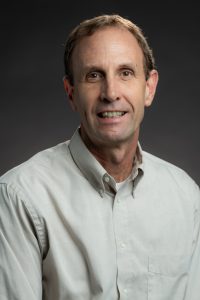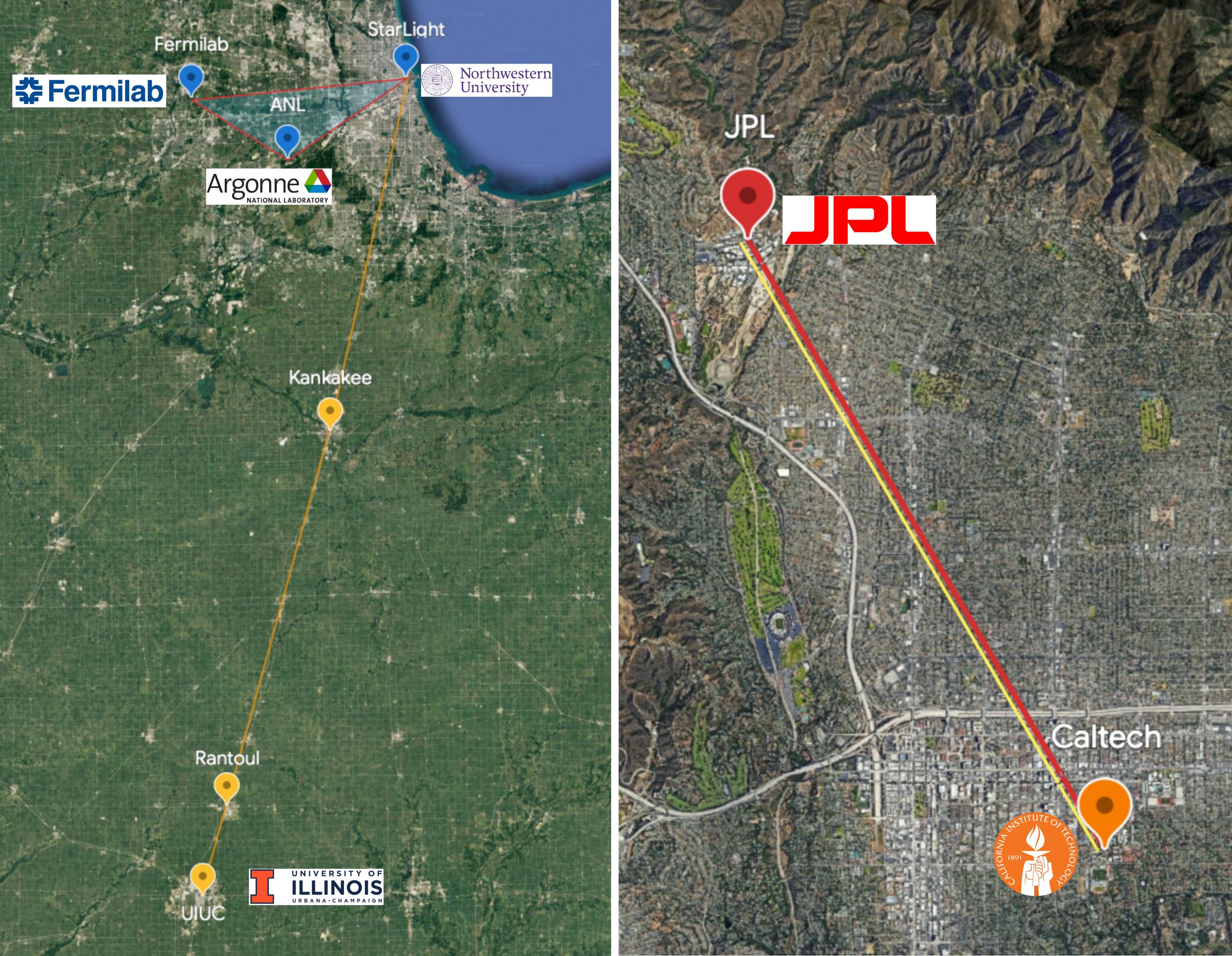Sustainability and environmental stewardship are core to the culture and operations that make particle physics experiments at the U.S. Department of Energy’s Fermi National Accelerator Laboratory possible.
Eric Mieland, an environmental protection specialist at Fermilab, and Fermilab Natural Areas, a 501(3)c nonprofit that studies, restores and educates the local community about Fermilab’s ecology, each received U.S. Department of Energy’s 2023 Sustainability Awards for positively shaping Fermilab’s sustainability practices.
The DOE awards highlight people and institutions from across DOE facilities who effectively demonstrate sustainable practices. These practices include conserving energy and water, reducing waste, improving the efficiency of vehicle fleets, acquiring sustainable resources and more. These awards also broadly recognize projects that have reduced costs and increased efficiencies.
Candidates of these awards are nominated in five categories: Lifetime Achievement; Sustainability Champion; Outstanding Sustainability Program/Project; Strategic Partnerships for Sustainability; and Innovative Approach to Sustainability.

Eric Mieland received a DOE Sustainability Award in the Sustainability Champion category. Photo: Dan Svoboda, Fermilab
A sustainability champion
Eric Mieland received the award in the Sustainability Champion category for his many years of contributions toward Fermilab’s sustainability efforts.
Mieland was instrumental in founding Fermilab’s sustainability management team. What began as a committee has developed into a managerial body with full-time staff that focuses on sustainable practices at the lab. This group includes Fermilab employees, selected by their divisions, who aim to improve the sustainability in the lab’s systems and operations, while also creating awareness about sustainability within the lab.
He has also managed Fermilab’s Environmental Management System, which is a set of processes that monitors and evaluates laboratory operations to protect the surrounding environment.
His efforts have included sustainably improving infrastructure as well. Mieland developed the lab’s first analysis on climate change’s impact to the laboratory, which gets reviewed and updated on a regular basis. Mieland also developed the lab’s recycling programs, critical in helping reduce waste.
In addition to improving sustainability within the lab, Mieland helps educate the surrounding communities on how Fermilab mitigates its effect on climate change through sustainable practices.
A strategic sustainability partnership

Volunteers from Fermilab Natural Areas, recipient of a DOE Sustainability Award in the Strategic Partnerships for Sustainability category, remove white sweet clover, a biannual invasive species, on the Fermilab campus. Photo: Walter Levernier, Fermilab
Fermilab Natural Areas was recognized with an award in the Strategic Partnerships for Sustainability category. Established in 2006, the non-profit, along with Fermilab’s ecological team, manages the lab’s 2,600 acres of natural areas, which encompass more than 1,000 acres of restored prairie.
FNA is led by volunteers and is independent of Fermilab and DOE.
Between April and December 2022, FNA volunteers contributed approximately 3,750 hours to the maintenance and oversight of the prairie. Volunteers manage invasive species, collect and spread native seeds, monitor rare plants and cross-pollinate species.
Their efforts have improved the natural area’s floristic quality — a metric to track land management efforts by assessing an ecosystem’s vegetation — by 42.9%.
FNA’s work in restoring the prairie also sequesters greenhouse gasses that contribute to climate change.
Through FNA’s many efforts to monitor plant and animal species, the volunteers also serve as organizational representatives and subject matter experts for Fermilab’s Ecological Land Management committee.
“Sustainability is a core aspect of Fermilab’s culture and a strategic pillar of increased focus in executing our mission successfully,” said Fermilab Director Lia Merminga. “Congratulations and thank you to Eric Mieland and Fermilab Natural Areas for playing a big part in shaping our sustainability efforts and helping advance our mission.”
Fermi National Accelerator Laboratory is supported by the Office of Science of the U.S. Department of Energy. The Office of Science is the single largest supporter of basic research in the physical sciences in the United States and is working to address some of the most pressing challenges of our time. For more information, please visit science.energy.gov.
The U.S. Department of Energy’s Fermi National Accelerator Laboratory will receive a total of $9 million in funding over three years for its Advanced Quantum Networks for Scientific Discovery (AQNET-SD) project. AQNET-SD will build upon previous groundbreaking work toward establishing national-scale quantum networks by using sophisticated techniques to push the technology to its limits. The funding is provided by the DOE Office of Science Advanced Scientific Computing Research program.
DOE is advancing research in quantum networks that can lead to a nationwide quantum internet which enables the development of new capabilities and enables new applications beyond what can be achieved with classic networks. The networks are aimed at making it possible to interconnect multiple quantum devices and realize a diverse set of protocols that enable the amount of precision required when taking measurements and scaling up quantum computers. Essentially, this work can help transform science, the economy and everyday life; the science enabled by the new networks could lead to faster cars, new medicines and improved manufacturing materials.
Transmitting quantum data across long distances is a challenge. AQNET-SD researchers will develop several technologies and protocols to establish and optimize a quantum network between Fermilab and DOE’s Argonne National Laboratory using quantum-encoded photons, the particles that transmit quantum information. They will also demonstrate the feasibility of the coexistence of quantum and classic technologies, which increases efficiency when the best-suited technology performs any given task. Finally, researchers will deploy a hybrid free-space optical fiber network, which offers highly secure, high-speed, low-latency, low-power data transfer. All of these efforts will help advance quantum communication and computing technologies by sharing the future of quantum computing.

Envisioned extensions of an operating quantum network for the AQNET-SD project. Left: The network includes several Chicagoland quantum nodes at Fermilab, Argonne, Starlight (a hub for national and international research and education networks in Chicago), and University of Illinois at Urbana-Champaign via links to Kankakee, Illinois, and Rantoul, Illinois. Right: Quantum links (both free-space and fiber) between Caltech and Jet Propulsion Laboratory. Image: IEQNET collaboration
“We are taking advantage of Fermilab’s expertise in systems engineering integration, advanced controls, readout electronics and ultra-sensitive sensors, which are all necessary for conducting successful particle physics experiments and applying them toward building a reliable, scalable and secure quantum network,” said Cristian Pena, principal investigator of the project at Fermilab.
However, improving quantum networks has implications beyond particle physics.
“Quantum networks are the foundation for distributed and scaled-up quantum computing, which has potential applications in banking, national security, energy delivery infrastructure, information security, and many other areas,” said Panagiotis Spentzouris, director of emerging technologies at Fermilab. He is also the principal investigator for the Illinois‐Express Quantum Network (IEQNET) project. “Needless to say, if quantum networking and quantum computing work, the world will look different.”
AQNET-SD is building on the success of IEQNET, led by Fermilab. This project, which included Argonne National Laboratory as well as academia and industry partners, developed, implemented and successfully demonstrated a quantum network between Fermilab and Argonne. IEQNET’s success was instrumental in driving forward the research that continues with this project.
Both Fermilab and Argonne have been awarded funding for separate projects that will leverage the expertise and capabilities developed by IEQNET. Collaboration between the two national labs will continue, as Fermilab will participate in the Argonne-led project, InterQnet.
“We are excited to have two projects funded in the Chicago region. Building on the ongoing collaboration among Argonne, Fermilab and other partners, we are poised to make great strides in scaling quantum networks in both the Argonne- and Fermilab-led projects,” said Rajkumar Kettimuthu of Argonne, principal investigator of the InterQnet project.
In addition to Fermilab and Argonne, the AQNET-SD project includes recognized leaders in the field: Caltech, the Jet Propulsion Laboratory, Northwestern University and the University of Illinois at Urbana-Champaign, each of which brings unique strengths and expertise in quantum network technologies
Fermi National Accelerator Laboratory is America’s premier national laboratory for particle physics research. A U.S. Department of Energy Office of Science laboratory, Fermilab is located near Chicago, Illinois, and operated under contract by the Fermi Research Alliance LLC. Visit Fermilab’s website at https://www.fnal.gov and follow us on Twitter @Fermilab.
The DOE Office of Science is the single largest supporter of basic research in the physical sciences in the United States and is working to address some of the most pressing challenges of our time. For more information, please visit science.energy.gov.
